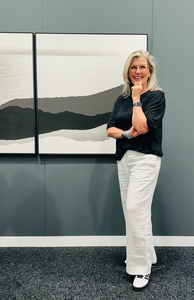
Margaret Lansink
Weesp
Margaret Lansink explores impermanence, transformation and feminine identity through analog photography, collage and books, earning international acclaim.
MessageMargaret Lansink is a Dutch visual artist working mostly with analog photography, collage and mixed media. Her poetic, intuitive images explore themes of impermanence, transformation and feminine identity — often viewed through the lens of aging, ecology and intergenerational memory.
She first gained international attention with Borders of Nothingness – On the Mend, a deeply personal series inspired by Japanese philosophy, for which she received the 2019 Hariban Award. That same year, The Kindness of One was selected for The Best Dutch Book Designs. In 2025, her book Unbound won the top prize at the Fedrigoni Top Award. Lansink has published 10 photobooks, including four handmade in limited editions, reflecting her commitment to the material and tactile aspects of the photographic object.
Working with techniques such as Liquid Light, Polaroid, Platinum Palladium and collage art, she fragments and reconstructs the image — often layering it with paint — in gestures that question what is revealed and what is concealed. Through what she calls “soft activism,” she challenges dominant ideals around femininity, age and the human detachment from nature.
Her work has been widely exhibited across Europe, Asia and North America, and is held in permanent collections such as the Victoria & Albert Museum (London) and the Bibliothèque Nationale de France (Paris).
Statement
Margaret Lansink’s artistic practice moves between photography, collage, painting, and experimental printmaking. Working mostly with her own analog images, she creates layered visual works that explore themes of impermanence, transformation, and feminine identity. Her images are often incomplete or obscured — inviting the viewer to slow down, to look beyond the surface, and to sense what remains.
Lansink’s work reflects on the quiet fading of women’s visibility with age, and the way we treat the natural world as something to use rather than respect. Rather than respond with loud protest, she chooses a softer form of engagement: intuitive gestures, fragile materials, and subtle disruptions that carry emotional and symbolic weight.
She works with images not to show how things were, but how they are felt — layered, uncertain, and changing over time. In series that range from intimate silver gelatin prints to collages on canvas or translucent sculptural works, Lansink’s approach always returns to one core idea: what it means to remain true to oneself, even as everything changes.
Her visual language is quiet but clear, influenced by artists and thinkers such as Georgia O’Keeffe and Simone de Beauvoir. Each work is a way of asking: how do we stay present — as women, as artists, as humans — in a world that often looks away?
©Margaret Lansink